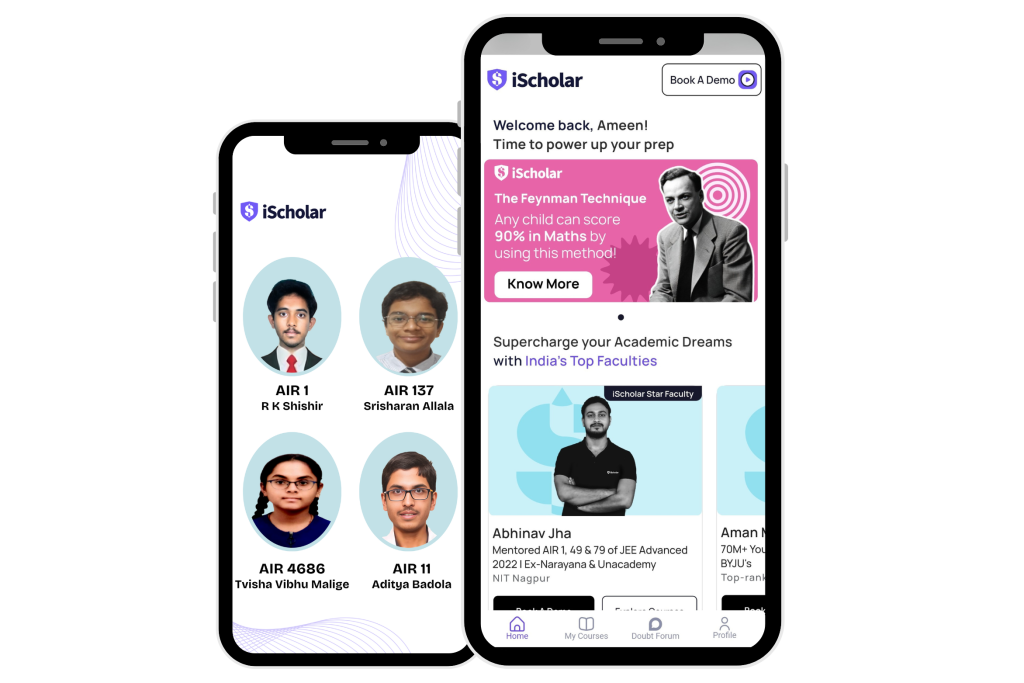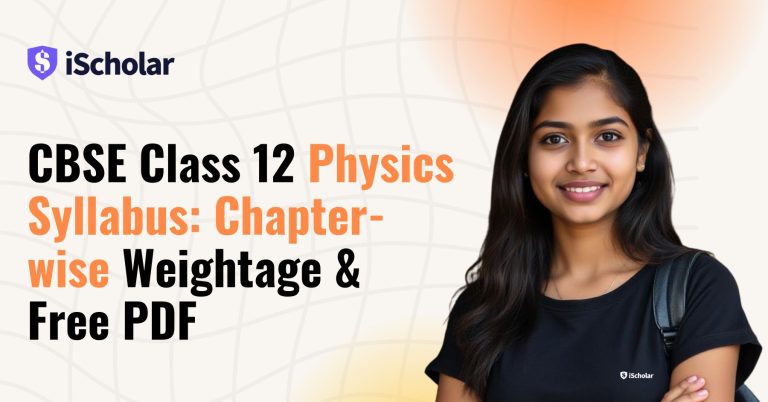NEET is a national-level examination for admission to medical colleges. Medical graduates who want to pursue additional study in medicine must take the NEET PG, a postgraduate entrance exam. Before starting their preparation, students should familiarize themselves with the NEET PG 2023 syllabus, which covers themes and subject weighting, as it is one of the toughest tests in India. The NEET PG curriculum will provide the test-taker an idea of the courses that they should concentrate on during preparation.
The National Medical Commission (NMC) is the recognized organization responsible for developing the syllabus for the NEET-PG. On the other side, the National Board of Examinations (NBE) has issued the NEET PG 2023 syllabus in an informational brochure.
Go through the below article to know more, so that the candidates can effectively plan their preparation process by reviewing the NEET PG syllabus PDF available on the official website and the exam pattern for 2023.
What Is the NEET PG Syllabus?
The NEET PG 2023 exam’s subject-specific themes are listed in the syllabus, which was created using the Pre-Clinical, Clinical, and Para-Clinical disciplines covered in the MBBS program. The Graduate Medical Education (GME) 2018 syllabus is used as the foundation for the NEET PG 2023 syllabus, which divides each subject into multiple categories. The complete NEET PG curriculum 2023 must be carefully studied by candidates if they want to succeed in the exam.
Medical candidates will benefit from the NEET PG syllabus 2023 since it will give them a sense of the questions that carry more weight. Every year, the NEET PG is conducted to cover seats in government, private, deemed/central, and ESIC/AFMS institutes of India for 12,690 Master of Surgery (MS), 24,306 Doctor of Medicine (MD), and 922 PG Diploma courses. Since the competition is very high, it is important to know everything about the syllabus in advance.
How Many Sections Comprise Neet PG Syllabus 2023?
The NEET PG syllabus is broken up into multiple divisions that include different medical-related subjects. Anatomy, physiology, biochemistry, pathology, microbiology, pharmacology, forensic medicine, social and preventive medicine, surgery, medicine, obstetrics and gynecology, pediatrics, radiodiagnosis, and radiotherapy are common topics included in the syllabus.
Candidates must have a good understanding of both the theoretical and practical parts of the medical field to pass the exam, which is covered in these sections.
As was already said, the graduates of the MBBS program studied the topics and disciplines that make up the NEET PG 2023 syllabus. Parts A, B, and C make up the remaining three sections of the entrance exam. The list of topics under each phase is also included below.
| Part A (Phase I) | Part B (Phase II) | Part C (Phase III) |
| Pre-clinical subjects | Para-clinical subject | Clinical subject |
NEET PG syllabus: Section wise
Part A – Pre-Clinical Subject
The following topics are included in the pre-clinical segment of the NEET PG syllabus for 2023:
- Anatomy
- Physiology
- Biochemistry
Part B: Para-Clinical Subject
The following topics are included in the paraclinical section of the NEET PG syllabus for 2023:
- Pharmacology
- Microbiology
- Pathology
- Forensic Medicine
- Preventive and Social Medicine
Part C: Clinical Subject
PG 2023 Clinical Syllabus for NEET is included in the following segment of the NEET PG syllabus for 2023:
- Medicine, Dermatology, and Venereology
- Surgery, Orthopaedics, and Anaesthesia
- Radiodiagnosis
- Obstetrics and Gynaecology
- Paediatrics
- Ophthalmology
- ENT
According to the NEET PG Pattern, which is shown below, the syllabus consists of subjects that are covered in the graduation-level curriculum for MBBS and BDS programs. Most of the pre-clinical, para-clinical, and clinical subjects will be the focus of the questions. Below is a list of all the subjects’ NEET PG 2023 syllabus.
Subject-wise NEET PG syllabus for the pre-clinical section:
| Anatomy | Gross Anatomy, Osteology, Muscular System Arthrology, Cardiovascular System Respiratory System, Digestive System Genito-Urinary System, Endocrine System & Individual Endocrine Glands Nervous System & its components, Special Sensory Organs, and Lymphatic System Surface Anatomy, Cross-Sectional Anatomy Cross-sections of thorax, abdomen & pelvis to know the interrelationship of organs & structures, Microanatomy. |
| Physiology | General Physiology, Nerve–Muscle, Blood, Respiratory System, Cardiovascular System Gastrointestinal System Nutrition, Environmental Physiology, Reproduction, Kidney, Neurophysiology The sensory system, Motor system The visceral and motivational system, EEG, sleep and higher nervous functions, Special Senses, Yoga |
| Biochemistry | Biological cells, Biomolecules, Enzymes, Metabolic pathways, their regulation, and metabolic interrelationships Carbohydrate metabolism, metabolism of Amino acid, Lipid, TCA cycle, and biological oxidation, proteinoids. Regulation of the metabolic pathways, Food assimilation, and nutrition, Hormones, Molecular Biology, pH, Buffer Physiological buffer systems Immunology, Environmental biochemistry, cancer and cancer makers |
Subject-wise NEET PG syllabus for the para-clinical section:
| General Pharmacology, Autonomic nervous system & Peripheral nervous system, Central nervous system Autacoids, Cardiovascular, Gastrointestinal, and respiratory system Hormones, Chemotherapy Immunomodulators, Drug therapy of glaucoma Cataract, Treatment of poisoning | Introduction to Microbiology, Bacteriology, parasitology, Virology, Mycology, Bacterial Staining and Cultivation Common Tests for Bacterial Identification Laboratory Diagnosis of Viral Infection Common Laboratory Methods for Diagnosis of Fungal Infections, Collection of Transport of Sample Host-Parasite relationship. Bacterial AND Viral Genetics, Immunity to infection Immunodiagnostic, Vaccines, Sterilization and disinfection, Bacteriology of water and air Microorganisms associated with gastrointestinal infections (Bacteria, parasites, viruses, and fungi). Gastrointestinal infections are caused by parasites. |
| Microbiology | Introduction to Microbiology, Bacteriology, parasitology, Virology, Mycology, Bacterial Staining, and Cultivation Common Tests for Bacterial Identification Laboratory Diagnosis of Viral Infection Common Laboratory Methods for Diagnosis of Fungal Infections, Collection of Transport of Sample Host-Parasite relationship. Bacterial AND Viral Genetics, Immunity to infection Immunodiagnostic, Vaccines, Sterilization and disinfection, Bacteriology of water and air Microorganisms associated with gastrointestinal infections (Bacteria, parasites, viruses, and fungi). Gastrointestinal infections are caused by parasites. |
| Pathology | Introduction to Pathology, Cell Injury, Amyloidosis and Calcification, Inflammation and Repair, Circulatory Disturbances Growth Disturbances and Neoplasia, Immunopathology, Infectious Diseases, Miscellaneous Disorders Cardiovascular Pathology, Respiratory Pathology, Urinary Tract Pathology, Pathology of the Gastro-Intestinal Tract Hematopathology, Liver and Biliary Tract Pathology Lymphoreticular System, Reproductive System, Osteopathology, Endocrine Pathology, Neuropathology |
| Forensic Medicine | Forensic Pathology, Clinical forensic medicine, Medical Jurisprudence, Forensic Psychiatry Forensic Sciences, General, clinical, environmental, and analytical toxicology. |
| Social and Preventive Medicine | History of Public Health, Concepts in Public Health, Epidemiology and Research Methodology Epidemiology of Specific Diseases, Entomology, Biostatistics, Health Planning, and Public Health Administration Nutrition, Environmental Health, Demography, Mental Health and Education Technology, Environmental Sanitation, Demography, and Family Planning, Mental Health Recent Advancements in Public Health and Miscellaneous topics, Sociology, School, Occupational, Urban Health |
Subject-wise NEET PG syllabus for the clinical section:
| Medicine Dermatology & Venereology | Diagnose with reasonable accuracy all surgical illnesses including emergencies, Surgical knowledge of head, spine, chest abdominal, and pelvic injury, know about various surgical techniques such as venesection, tracheostomy, endotracheal intubation, circumcision, a biopsy of surface tumours. Comprehensive diagnosis of common Ear, Nose, and Throat (ENT) diseases including emergencies and malignant neoplasm of the head and neck, use of a head mirror, otoscope and indirect laryngoscopy, possess knowledge of various ENT rehabilitative programs. Therapeutic Orthopedics, knowledge of Splinting, Manual reduction of common fractures and dislocations, recognize metabolic bone diseases. Acquire knowledge of a pre-anaesthetic checkup and pre-anaesthetic medications; simple general anaesthetic procedures, anaesthetic records, cardio-pulmonary brain resuscitation (C.P.B.R.) methods. |
| Surgery, ENT, Orthopaedics, and Anaesthesia | Identify and diagnose all aspects of Emergency Room Radiology, Basic hazards & precautions in Radio-diagnostic practices, the need for various radio-diagnostic tools in medical practice, learn about various imaging techniques, including isotopes C.T., Ultrasound, M.R.I., and D.S.A., know about radioactive isotopes and their physical properties, identify symptoms & signs of various cancers & steps of investigations management |
| Radiodiagnosis and Radiotherapy | Identify and diagnose all aspects of Emergency Room Radiology, Basic hazards & precautions in Radio-diagnostic practices, need for various radio-diagnostic tools in medical practice, learn about various imaging techniques, including isotopes C.T., Ultrasound, M.R.I., and D.S.A., know about radioactive isotopes and their physical properties, identify symptoms & signs of various cancers & steps of investigations management |
| Obstetrics and Gynaecology | Basic Sciences-Normal & abnormal development, structure and function of female & male urogenital systems, endocrinology of the reproductive system, Gametogenesis, fertilization Role of hormones in Obstetrics & Gynecology, Humoral and cellular immunology in Obstetrics & Gynecology Physiology of normal pregnancy, diagnosis of pregnancy, Anemia in Pregnancy, Carcinoma Cervix, epidemiology, staging diagnostic procedure Treatment of Menopause and related problems, Contraception, Neonatology, and Recent Advances. |
| Pediatrics | Contraception, Neonatology and Recent Advances, Growth and development, Nutrition, Immunization, Infectious Diseases, Hematology Respiratory system, Gastro-Intestinal Tract, Central Nervous System Cardiovascular system, Genito-Urinary System, Neonatology, Pediatrics Emergencies, Fluid-Electrolyte Genetics, Behavioral Problems, Pediatrics Surgical Problems, Therapeutics. |
| Ophthalmology | Anatomy and development of the eye, Clinical methods in ophthalmology Optics and refraction, Disease of the conjunctiva, Disease of the cornea, Disease of the sclera, Disease of the Uveal tract, lens, Glaucoma, vitreous, Retina, Vision and neuro-ophthalmology, Strabismus and Nystagmus The disease of the lids. A disease of the lacrimal apparatus, Disease of the orbit, Ocular injuries, Basic principles of ocular therapy Systemic ophthalmology Community Ophthalmology Miscellaneous Topics |
| Psychiatry | Behavioral Sciences, Cognitive process, and memory, thinking & problem solving Intelligence: General concepts & techniques for assessment, Personality (Principles of Personality development) & objective testing of Personality, Introduction, and classification of Psychiatric disorder, Aetiology of Psychiatric disorders Drug and Alcohol dependence, Personality disorders, Counselling & psychological therapies Psychological testing |
Is NEET PG and MBBS Syllabus the Same?
The MBBS syllabus is not the same as the NEET PG syllabus. While MBBS is an undergraduate degree program that medical aspirants enroll in to become licensed doctors, NEET PG is a postgraduate-level entrance exam that medical graduates who intend to continue further studies in medicine must take.
Anatomy, physiology, biochemistry, pathology, microbiology, pharmacology, forensic medicine, social and preventive medicine, surgery, medicine, obstetrics and gynecology, pediatrics, radiodiagnosis, and radiation are among the medical specialties covered by the NEET PG syllabus.
The MBBS syllabus, in contrast, includes a broad range of topics, including anatomy, physiology, biochemistry, pharmacology, microbiology, pathology, forensic medicine, community medicine, surgery, medicine, obstetrics and gynecology, pediatrics, and many more specialty disciplines.
The MBBS syllabus covers a wider range of disciplines that are essential for developing a solid foundation in medicine, whereas the NEET PG syllabus is primarily focused on testing the candidate’s knowledge and skills in the specialized areas of medicine.
FAQ- NEET pg syllabus Pdf
Who prepares the NEET PG syllabus for 2023?
The National Board of Examinations (NBE), administers the NEET PG syllabus. The Indian Ministry of Health and Family Welfare formed the NBE as an autonomous institution.
How many sections comprise the NEET PG syllabus 2023?
NEET PG syllabus comprises 3 sections, pre-clinical, para-clinical, and clinical sections.
Are NEET PG and MBBS syllabus the same?
No, NEET PG and MBBS syllabus are not the same.
Is NEET PG MCQ type?
Yes, NEET PG has multiple-choice questions.
Conclusion
To conclude, the NEET PG syllabus pdf is one of the most important tools for preparing for the NEET exam. Finally, here are some advantages of understanding the NEET PG 2023 syllabus:
- The syllabus aids candidates in developing a methodical, organized plan of action.
- They develop a talent for the subjects that require exam preparation
- Candidates who are aware of the NEET PG syllabus can understand the topics covered in each subject.
- Students gain knowledge of complex subjects and make preparation plans accordingly.
- The NEET PG syllabus should be kept in mind as students create a topic-focused study schedule.





